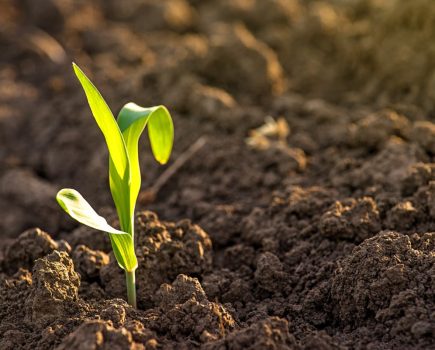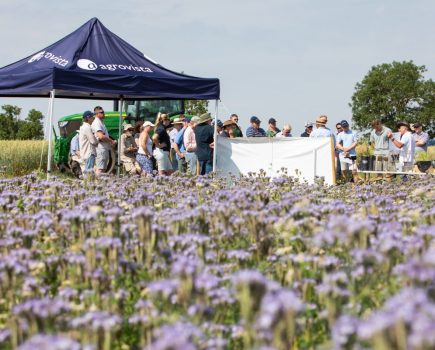Originally pursuing a career in medicine, Dr Johnny Wake had to hit the ground running when he was asked to manage Courteenhall Estate 10 years ago. CPM hears how a clear strategy has been key to the business’ successful evolution.
“It centres around leaving a legacy to be proud of – that’s our starting point.”
By Janine Adamson
It may prove challenging for some to draw parallels between medicine and agriculture, but according to Courteenhall Estate’s Dr Johnny Wake, it’s more about providing a new perspective on a situation while asking the questions which could otherwise be missed.
He admits at first, he’d planned to remain a medical practitioner while managing the Northampton-based estate, and that he had no plans to undertake the role full time. However, that soon changed. “There were a lot of fires to fight and financial struggles – the business wasn’t very sustainable and it felt as though there was a lot to do.
“Of course there’s no crash course in agriculture; the most I’d known before was helping to cart grain at harvest. So I signed up to the Institute of Agricultural Management (IAgrM)’s leadership course which was the trigger point,” explains Johnny.
He says this meant taking a step back to devise a strategy and longer-term vision for the estate’s farming enterprise. “It centres around leaving a legacy to be proud of – that’s our starting point. Then, it focuses on three approaches to sustainability – financial, environmental and community.”
Back in 2013 when Johnny took over, Courteenhall had a narrow rotation based on winter wheat and oilseed rape. The farm’s soils are mostly heavy, Hanslope series clays and blackgrass was becoming an increasingly big problem.
“The first steps we took involved widening the rotation to include spring cropping, cover crops and increasing our environmental stewardship – it was primarily with blackgrass management in mind. We also made an early switch to min-till with precision farming techniques to help restore life into our soils.”
At the same time, the farm embarked on a broiler chicken enterprise which according to Johnny, was a steep learning curve for all involved. “The wider benefits are it provides a direct market for our wheat grain while utilising the poultry manures to reduce artificial fertiliser inputs,” he adds.
“The team were mostly on board as we started to implement change – an issue such as blackgrass is very visible and hard to ignore. However, it can be tricker to convince people when it comes to soil biology.”
A further shift came around two and half years ago when the farm entered into Countryside Stewardship, with half of its fields being down to AB15 (two-year sown legume fallow). The 10-year Higher Tier agreement also involves AB8 (flower-rich margins and plots), AB9 (winter bird food) and WD6 (lowland wood pasture).
Johnny says this is what unlocked the possibility of the estate rearing its own cattle again, which had been missing from the landscape for 30 years. “Where previously we had a contract with a local sheep grazier, we were able to introduce a herd of our own Traditional Herefords which are 100% pasture-based and overwintered.
“But the stewardship scheme also provides a fixed, reliable income while helping to enhance the environment. Whereas before our farming system was simplistic in approach, we’re now much more diverse,” he explains.
Johnny admits that stewardship has helped to offset the arable side of the business, which isn’t always profitable, this season especially. But a determination to grow food and look after nature is what drives his journey at Courteenhall.
Furthermore, a consistent part of his focus on sustainability is water. Having previously been ‘blissfully ignorant’ of farming’s wider impact, Johnny says he soon made water management a key priority for the estate.
“We look at water from a dual perspective – resource management and risk mitigation actions. A lot of what Courteenhall does is with water in mind, whether that’s precision farming for precise applications, cover cropping to prevent run-off, or implementing a rainwater harvesting system. But we want to do more.
“Farming has the capacity to deliver long-term actions which can help with flood mitigation and protect local communities. Surely this should be a win-win?” he questions. Such aspirations include a proposed whole farm reservoir project, as inspired by the work of Spains Hall Estate in Essex.
Although Johnny acknowledges the work of Courteenhall alone might not have a huge impact in the grand scheme of things, being part of a larger cooperative is a different ball game. “Suddenly by working together, farmers can make a tangible landscape-scale difference, whether that’s for water, biodiversity, or beyond,” he stresses.
“I came to farming from the outside and one thing that immediately struck me was a lack of collaboration. As a result, I helped to establish the recently launched Central England branch of the EFG (Environmental Farmers Group), which can help to address this issue (see box). It’s about improving how we work together both locally and internationally for environmental and financial gains.”
Importantly, Johnny practices what he preaches and has instigated a series of joint ventures with partners across the industry. One such collaboration is in vertical hydroponics – growing medium value crops on columns in polytunnels, on the estate’s less productive land.
He also has plans for a joint-venture farm shop and café to add value to the estate’s produce through a direct route to market. Johnny hopes this will further strengthen Courteenhall’s relationship with the local community – which is a significant part of the estate’s strategy which it’s already working to deliver.
Because as well as engaging with LEAF’s Open Farm Sunday and hosting visits from multiple schools, the estate is home to New Leaf Learning – a charity which offers a nature-based provision for children not in mainstream schools.
A final part of the story so far has been to boost Courteenhall’s renewable energy provision. There are now 16 ground source heat pump systems, five air source heat pumps, 8 rooftop solar arrays, two solar-thermal arrays, a biomass system and two wind turbines. Furthermore, planning permission has been granted for an anaerobic digestion plant to work in tandem with the poultry side of the business.
All in all, it’s arguable that Courteenhall, which has been under the Wake family’s guidance since 1672, has been through a rapid period of change during the past 10 years. But given the chance to rewind, would Johnny do it all again? “I’m often asked if I miss medicine, and I suppose what I do miss, is being fully qualified and trained in a subject. But I love what I do now and really believe in the importance of getting it right,” he concludes.
This article was taken from the latest issue of CPM. Read the article in full here.
For more articles like this, subscribe here.
Sign up for Crop Production Magazine’s FREE e-newsletter here.




